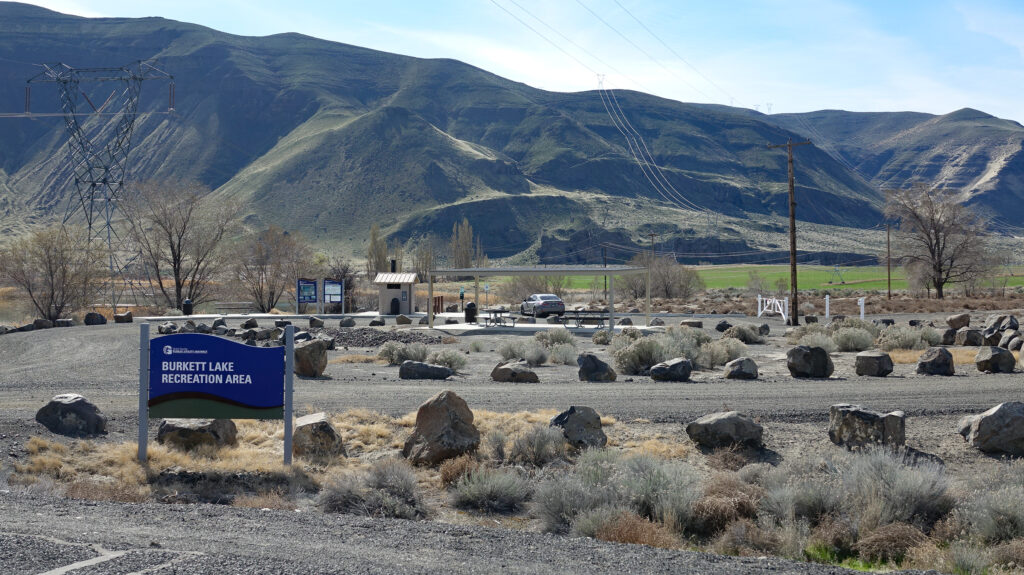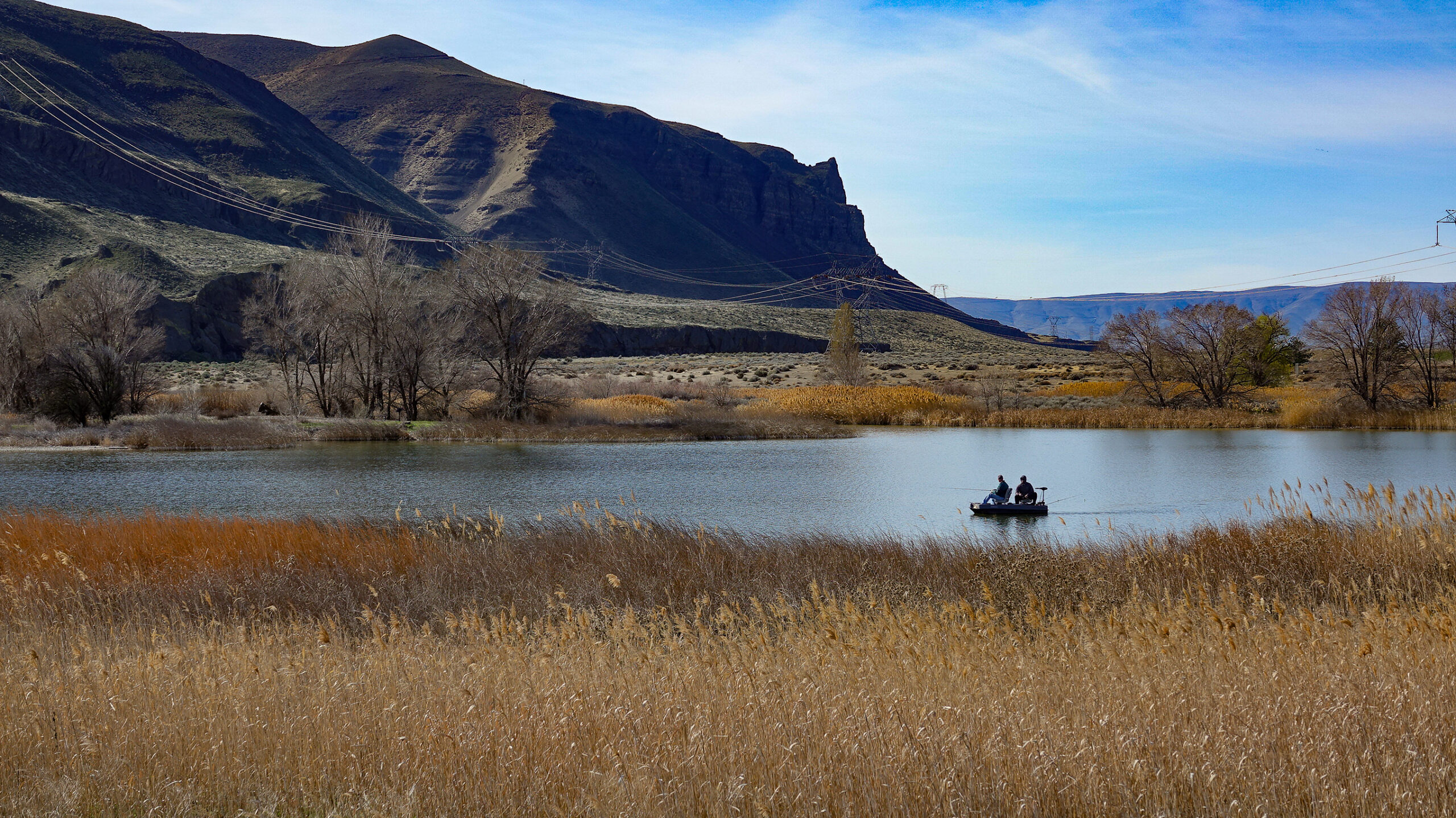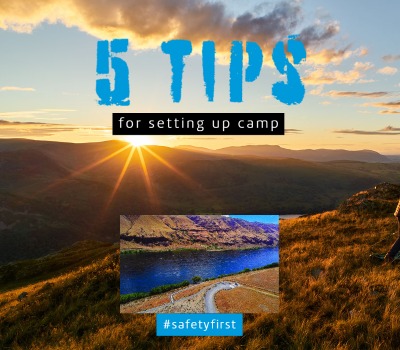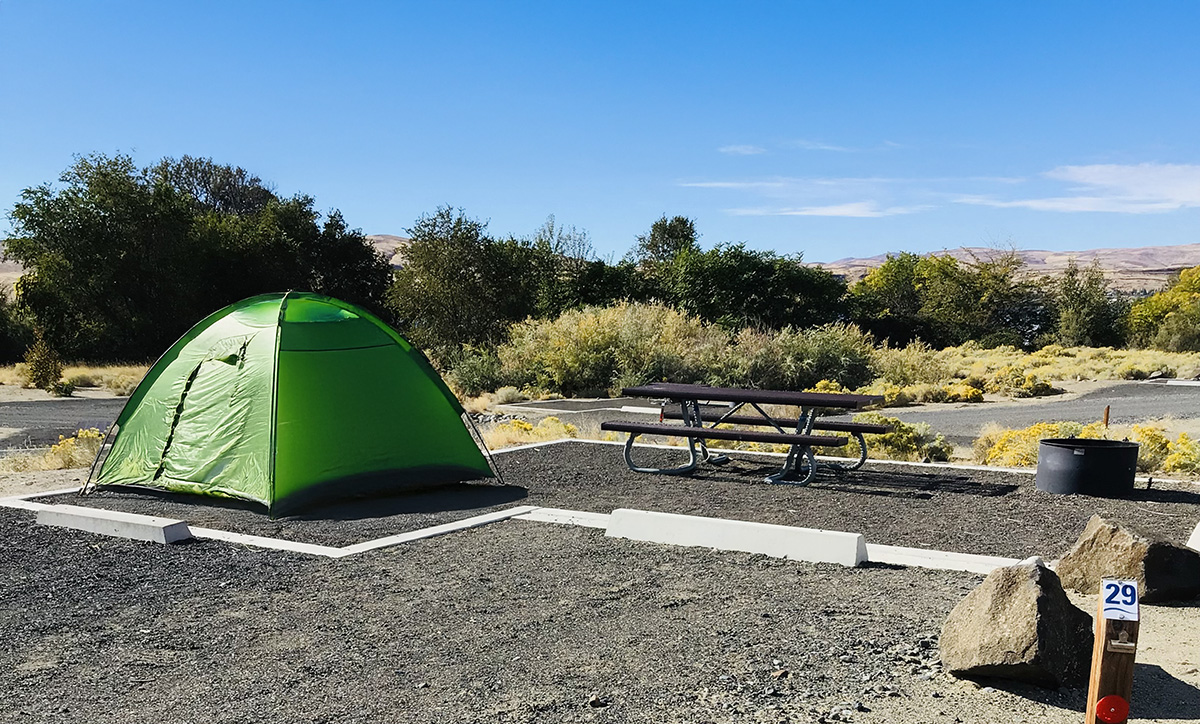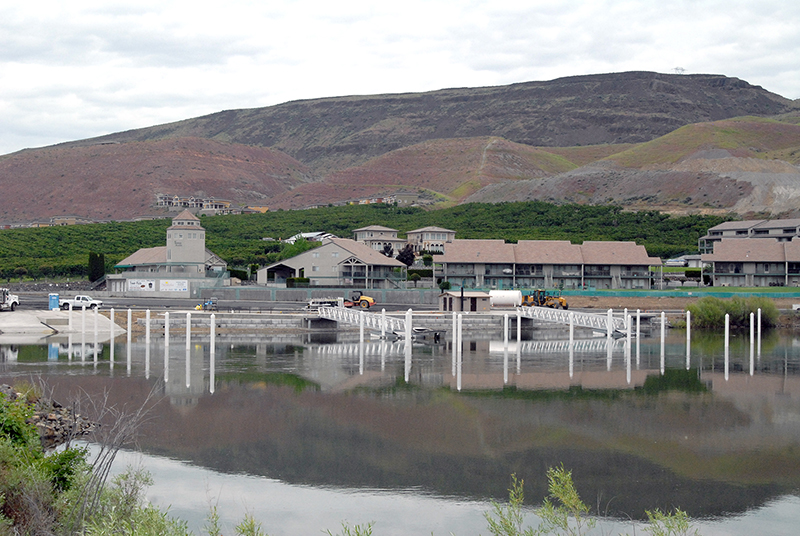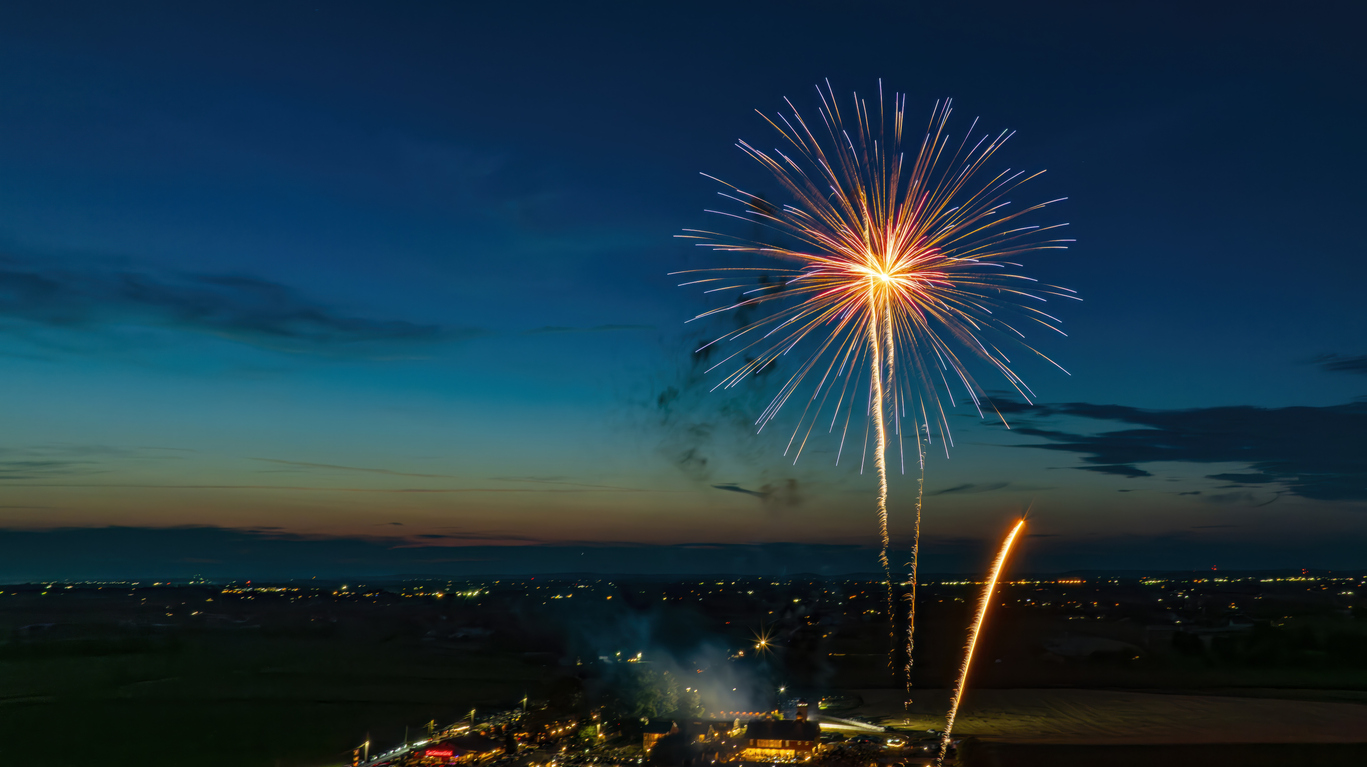BEVERLY – Heading south on Highway 243 you could easily miss Grant PUD’s Burkett Lake Recreation Area.
It’s easy to understand why.
The route carves through scenic, undulating slopes carpeted with sage and yellow desert grasses that catch the sun as they flow around outcroppings of craggy rock in their descent to the cliffs of columnar basalt that have watched over the Columbia River since prehistoric times.
A little farther south, fruit orchards and vineyards are blooming this time of year with the beginnings of the season’s grape, apple and cherry harvests. The desert is already coming fleetingly alive with wildflowers, some as tiny as the head of a pin.
With so much natural beauty to take in, it’s easy to overlook the small signs signaling the upcoming turnoff to Burkett Lake, an oasis in a desert landscape. A tranquil spot for a few hours of fishing, birdwatching, a quiet walk or family picnic.
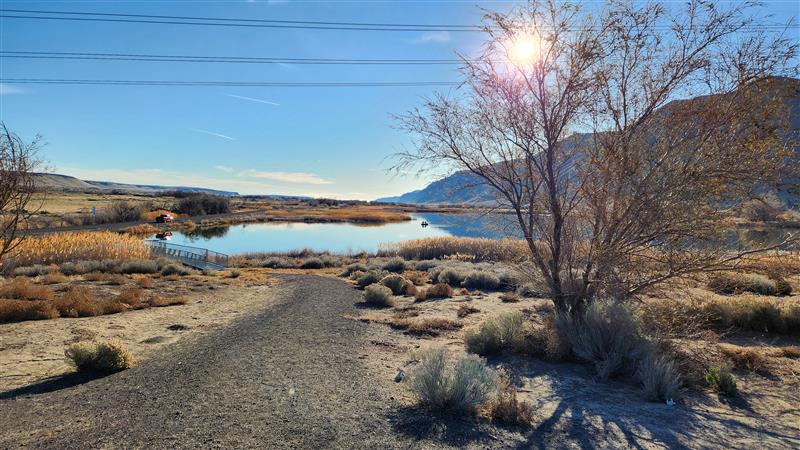
Be alert as you approach the community of Beverly and pass under the long expanse of Beverly Bridge, an historic old railroad trestle, now reconditioned into a pedestrian crossing for the Palouse to Cascades Trail.
Immediately after the trestle, turn left onto Lower Crab Creek Road – also called Road 19 – and head up a gentle slope to the lake.
Burkett Lake is a 37-acre, man-made lake at the foot of the Saddle Mountains within the Crab Creek Corridor. It’s a half mile inland from the portion of the Columbia River that forms the reservoir behind Priest Rapids Dam.
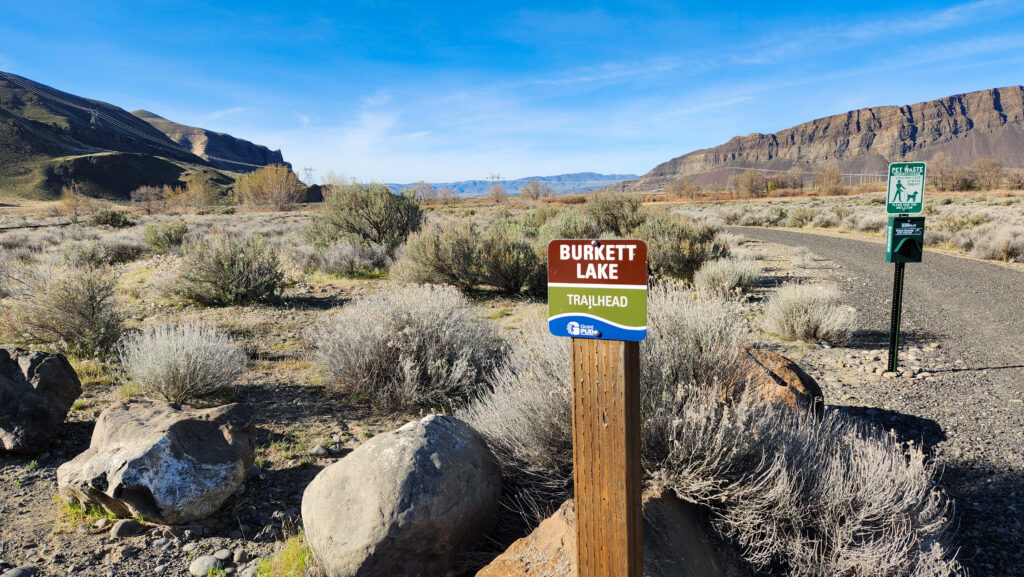
The lake is one of 19 recreation areas owned and managed by Grant PUD for public enjoyment as part of the utility’s obligation to mitigate for the environmental impacts to the Columbia River from its Priest Rapids and Wanapum dams.
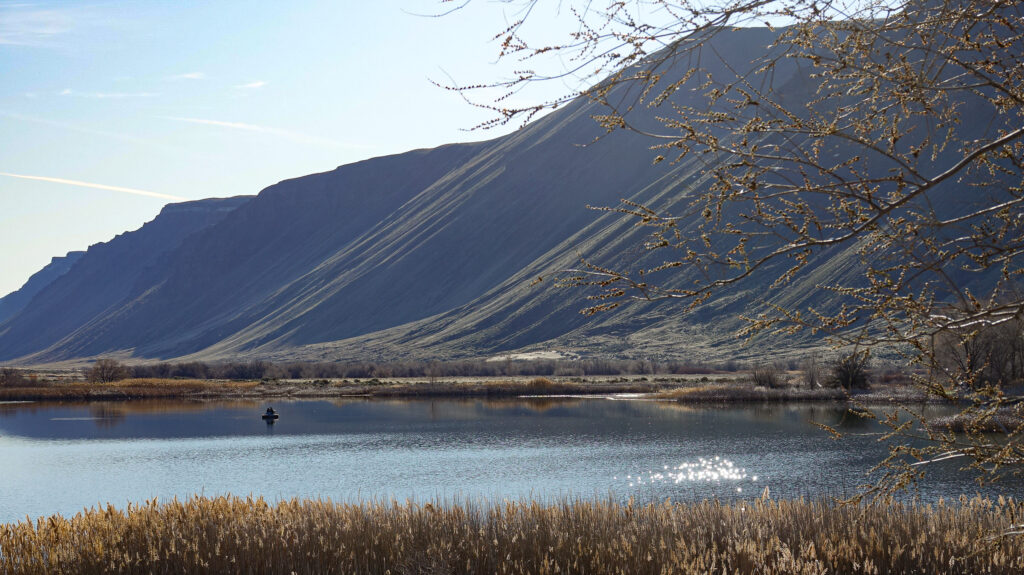
At both the western and eastern ends of the lake are small parking lots with informational signage, vault toilets and trailheads for easy walks near the lake. The western entrance also has picnic tables, a covered, open-air sun/rain shelter and an all-access fishing dock. Trails and the lake are open to pedestrians and non-motorized vehicles only.
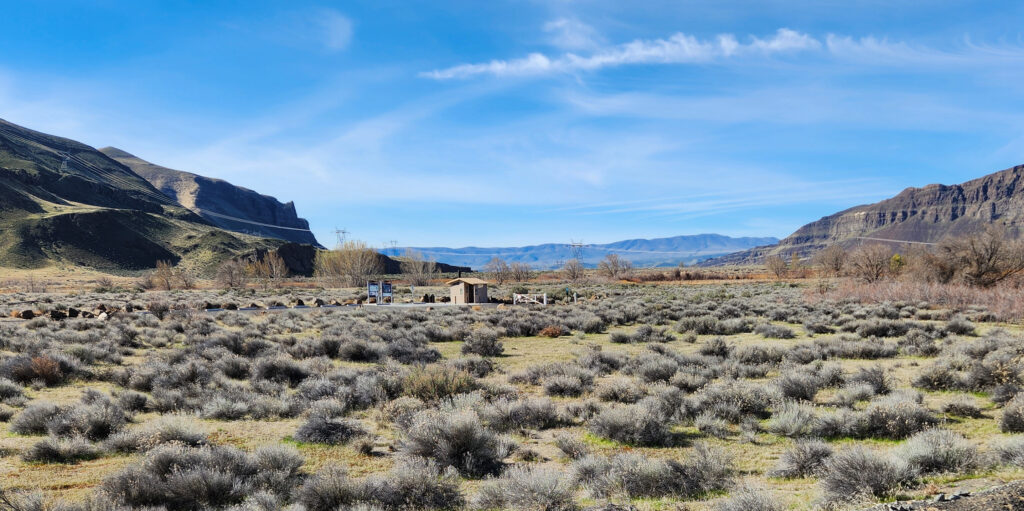
Grant PUD owns 63 acres of native, low-desert, shrub-steppe habitat surrounding the lake. Some of the habitat is undergoing renovation. The lake’s irregular shoreline is fringed with marshes of cattails, willows and bulrush alive with warblers and other birds, both song and aquatic, that fill the air with their quacks, chirps and tweedles.
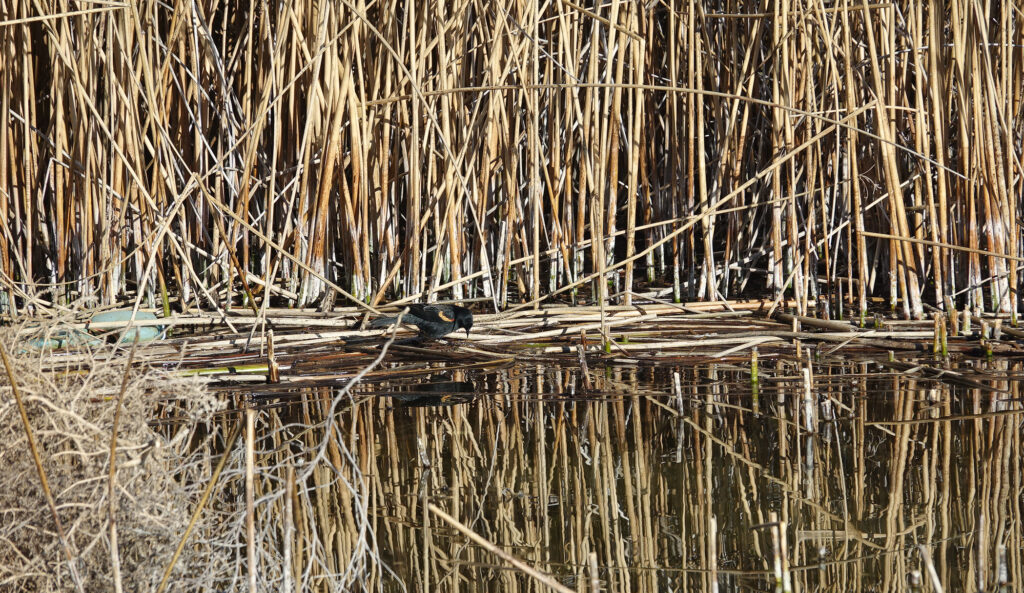
Main trails through the area are made of well-maintained, compacted gravel. Earthen side trails lead to scenic, shoreline rest spots and onto finger-like islands that jut into the lake at its eastern end. Trails are largely unshaded, with interpretive signage about habitat and fauna.
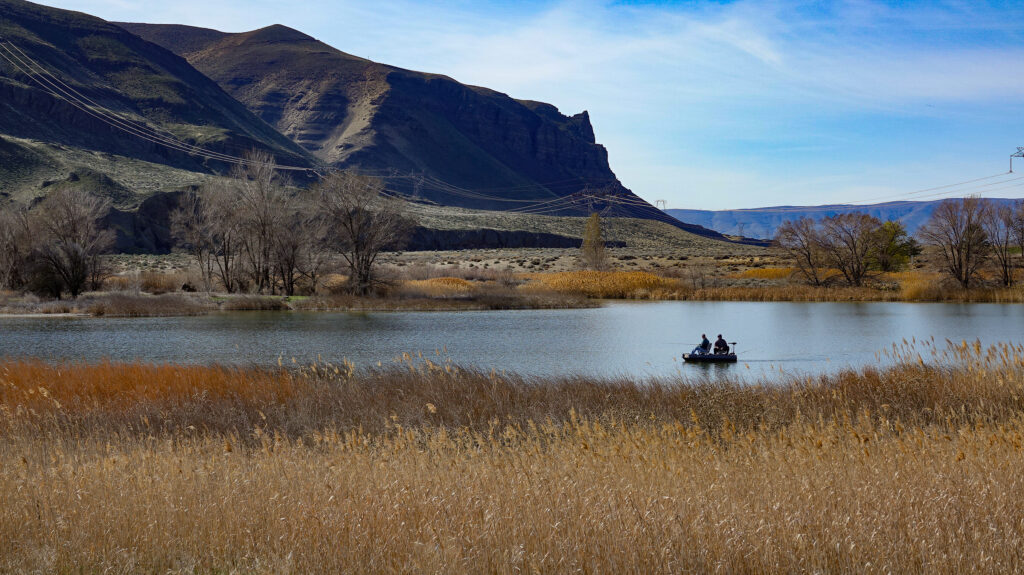
Once privately owned, the lake is 12 feet at its deepest point and fed by a canal from the larger Nunnally Lake. It was originally created for area irrigation and water skiing. An adjacent land owner still uses the pumps along the western shoreline for irrigation.
Today, Burkett Lake is a favorite with local anglers who drop their lines for sunfish, largemouth bass and rainbow trout. Grant PUD, together with the state Department of Fish and Wildlife, stock the lake annually with about 2,000 rainbow trout, each about a foot long. The catch limit is five per angler.
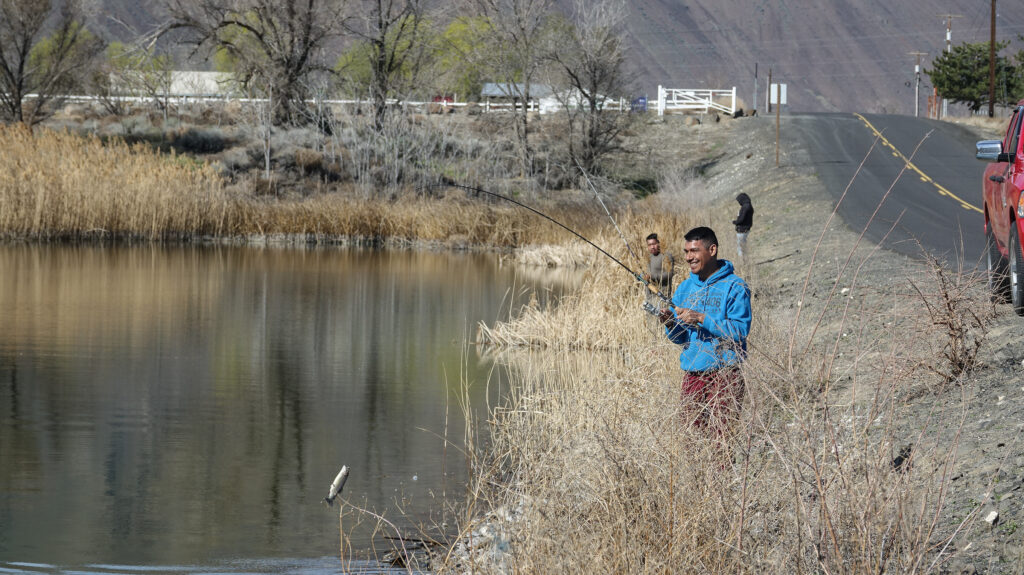
During a recent morning visit, a couple weeks after the trout were stocked in early March, anglers dotted the shoreline below Lower Crab Creek Road and seemed to be catching a fish with each cast.
“This is a calm place to come with the family,” one area resident said as his friend, slightly down lake, reeled in a trout. “We’re finished for the morning and heading over to the picnic tables to grill our fish for lunch.”
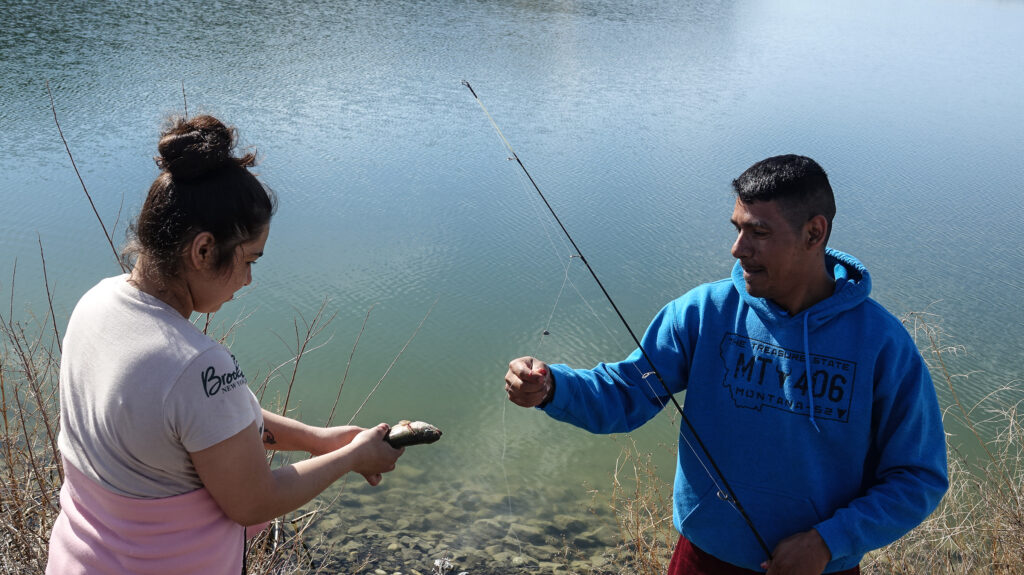
Burkett Lake is a hidden gem in a desert filled with life so well adapted to its arid landscape that you have to be intentional to fully appreciate it. The best advice for a visitor is displayed on an interpretive sign, near a small bench at the lake’s east end – “Sights and sounds are all around you. Take time to listen.”
— Christine Pratt, Grant PUD Public Affairs, [email protected], 509-679-7482
